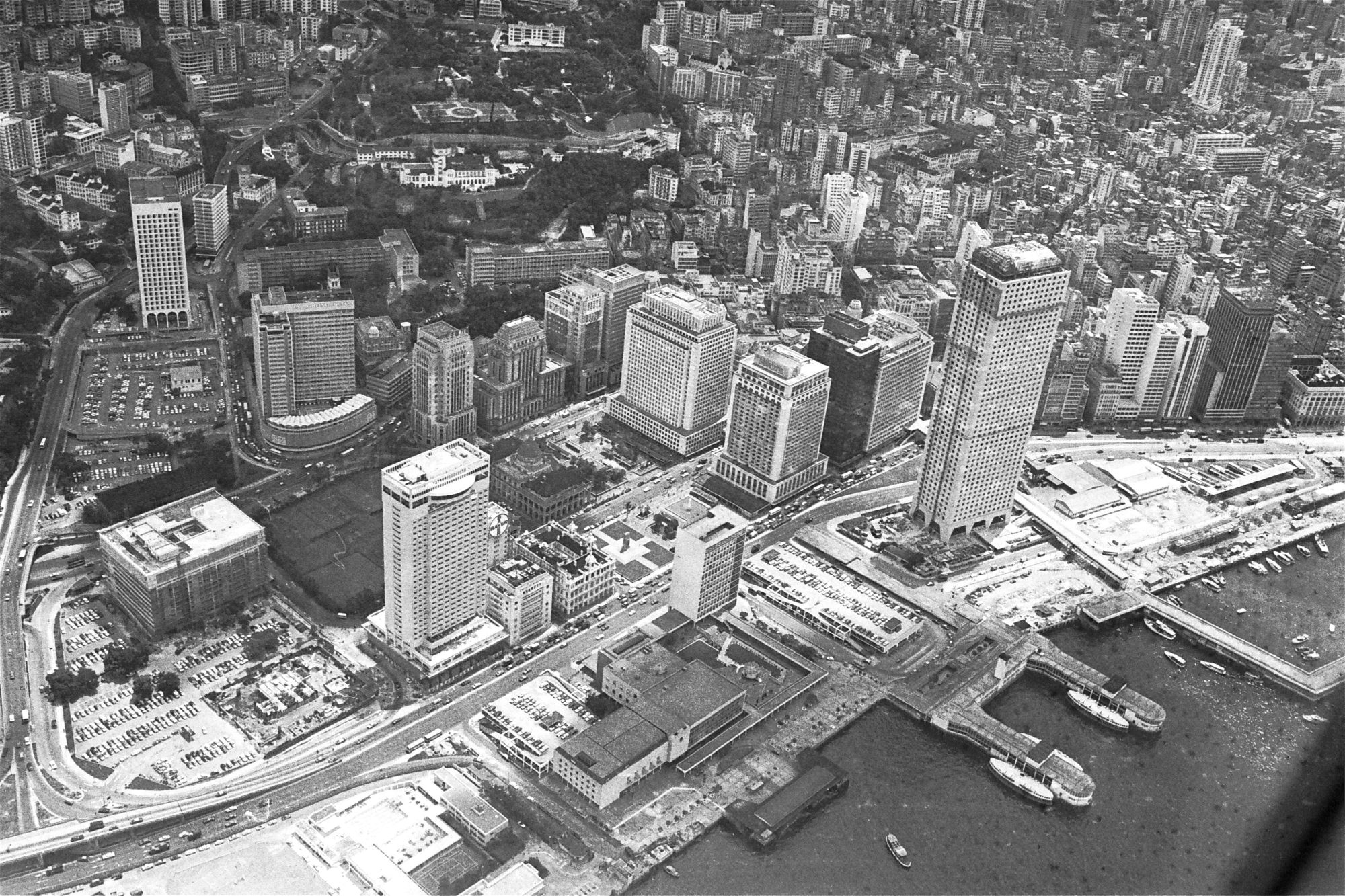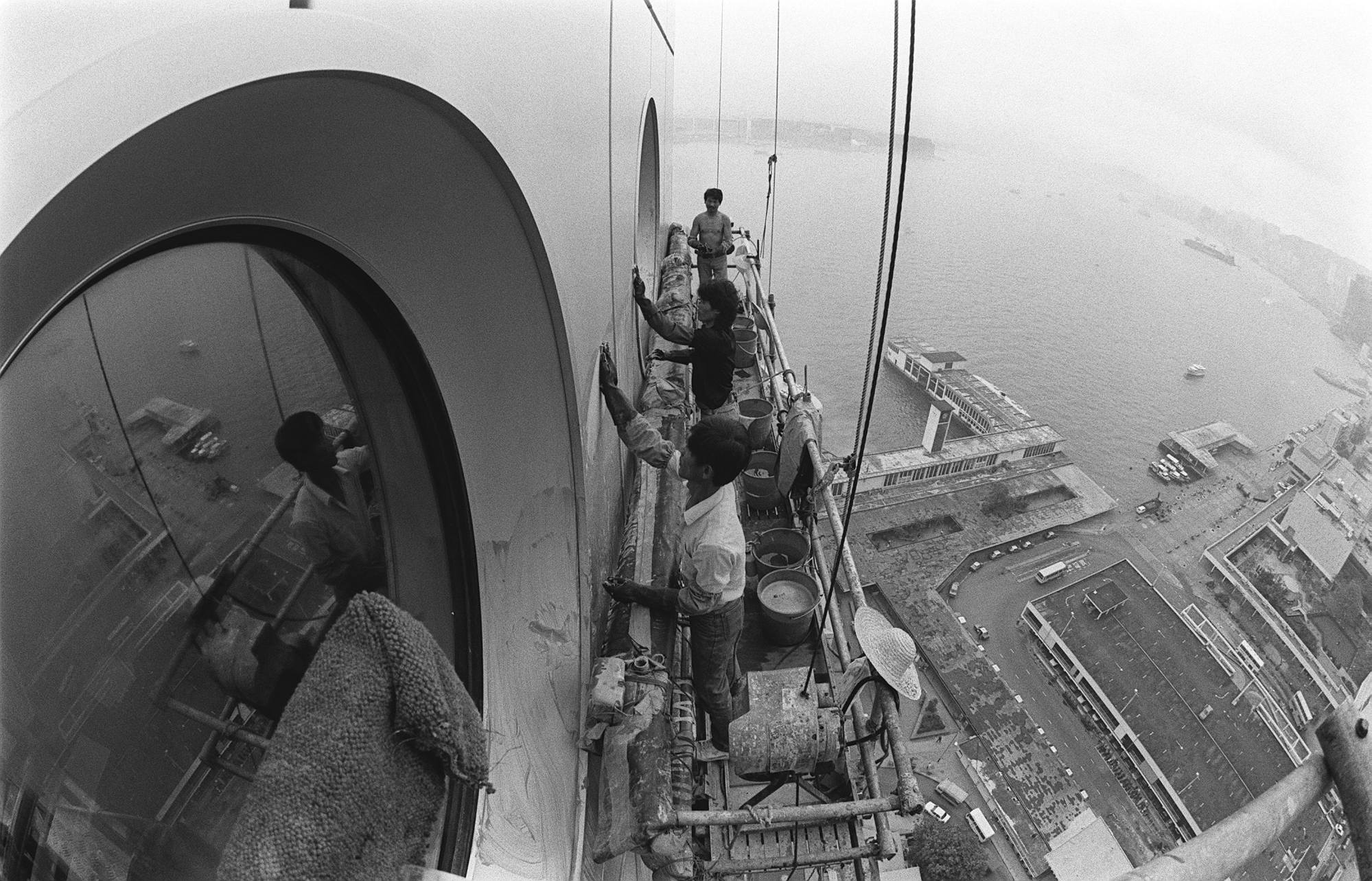
Hongkong Land’s Jardine House, iconic witness to 50 years of city’s development, celebrates milestone with exhibitions
- The stories behind the distinctive round windows and the unobstructed harbour view of what was once the tallest building in Hong Kong
- Tower’s history spans city’s growth from a mere US$8 billion economy to US$360 billion last year
It remained the tallest building in Hong Kong until 1980.
“When completed in 1973, Jardine House set new standards with its robust design, the fastest lifts in Asia, the largest air-conditioning chillers and iconic 1,748 circular glazed windows that offer unobstructed harbour views,” said Jonathan Lloyd, group head of corporate affairs and sustainability with Jardine Matheson, the conglomerate that owns 53.3 per cent of Hongkong Land.

Jardine House continues to innovate, Lloyd added. With its BEAM Plus Platinum certification, the building is an important example of how existing buildings can be retrofitted to meet modern standards.
“The sustainability of this skyscraper is ensured by the architectural brilliance, adherence to top-tier construction practices, meticulous maintenance and reinvestment spanning five decades,” Lloyd said.

When Jardine House opened, Hong Kong was a mere US$8.03 billion economy, according to data from the World Bank. Last year, the city’s total economic output hit US$359.84 billion – having expanded 45 times since 1973.
“As a renowned landmark overseeing the Victoria Harbour, [Jardine House] has been at the heart of Hong Kong’s unchanged position as an international business and financial centre for half a century,” Lloyd said.
Hong Kong’s distinctive buildings played an important role in the city’s transformation into its current ultra-modern and business-efficient iteration. Picture postcards – the Instagram posts of their day – carried images of the glittering Hong Kong Island skyline, including Jardine House, all around the world.
“Urban design, including well-designed buildings, will add character to cities,” said Sing Tien Foo, provost’s chair professor in the department of real estate at the business school of National University of Singapore. “Skyscrapers and iconic buildings designed by renowned architects always attract the attention of visitors, users and residents. They could also be seen as iconic landmarks in some cities, providing usable space and adding to the quality and taste of urban living.”
Today, with more cities striving to become more sustainable, buildings with environmentally friendly features become more important to help cities achieve zero carbon targets, Sing added. “Keeping older buildings and renovating and improving them to make them more energy-efficient is another way of achieving more sustainable growth,” he said.

To celebrate Jardine House’s golden anniversary, Hongkong Land is holding twin exhibitions that showcase the property’s history and heritage, as well as its future. The exhibitions, located on the ground and first floors of Jardine House, formally opened on Thursday and will run until January 3, 2024.
“For more than 130 years, Hongkong Land has been progressing alongside Hong Kong,” said John Simpkins, executive director and general counsel of Hongkong Land. “The twin exhibitions of Jardine House elevate the past and future of this iconic building in Hong Kong.”
One interesting story in the exhibition explains how the building’s round windows came about.
James Kinoshita, the design architect, has confirmed that the idea came from his wife, who told him that she found the typical square or rectangular windows of buildings to be “boring”, according to Stanley Wong, an artist also known as anothermountainman, who interviewed and took photos of the architect for the exhibition.
When Hongkong Land paid the then record price of HK$258 million to lease the plot where Jardine House now stands for 75 years, the then British colonial government agreed that no building directly to the north of Jardine House would ever obstruct its views. Thus Henderson Land today is prevented from building anything taller than 50 metres on the plot’s western fringe and nothing higher than 16 metres to the east. The same agreement also capped the height of the General Post Office building, built in 1976 north of Jardine House, to 37 metres.

